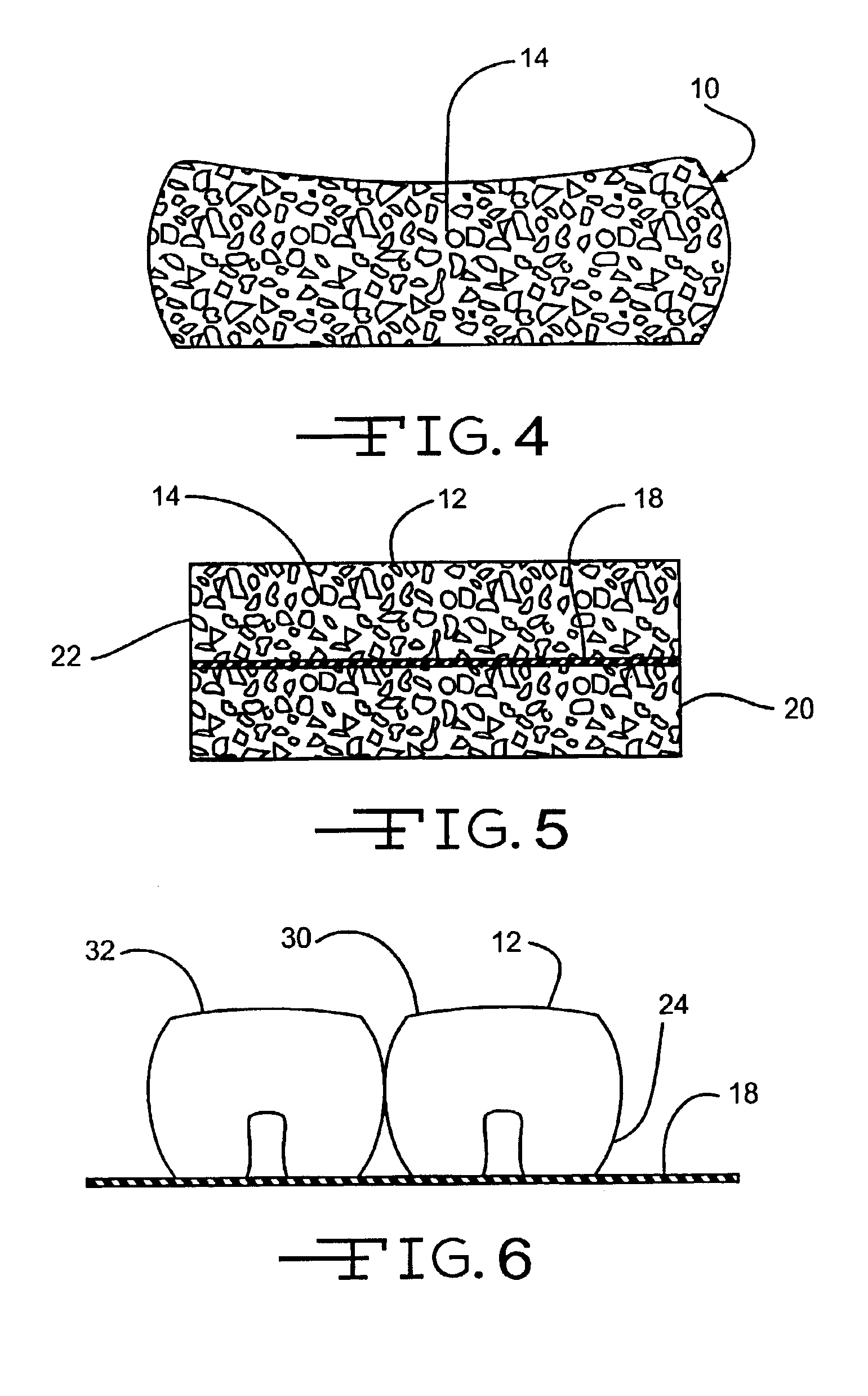Bead cushioning device
a cushioning device and bead technology, applied in the field of beads in cushions, can solve the problems of high pressure on bony prominences (e.g. hip bones) and non-prominent areas, and achieve the effect of reducing pressur
- Summary
- Abstract
- Description
- Claims
- Application Information
AI Technical Summary
Benefits of technology
Problems solved by technology
Method used
Image
Examples
Embodiment Construction
The present invention is directed to a cushioning device 10, as illustrated in FIG. 1. The cushioning device has a flexible container 12 and a plurality of polymeric beads 14, as illustrated in FIG. 2, within the flexible container 12. The beads 14 are designed to flow under a slight force and easily shear.
The cushioning device is capable of receiving a physical object 16, as shown in FIG. 3, that applies a force (F) to the cushion 10. When the force (F) is applied to the cushioning device 10, the cushioning device 10 deforms from its original shape, an example thereof is illustrated in FIG. 2, to conform about a portion of the physical object 16, as illustrated in FIG. 3.
When the physical object 16 is removed from the cushioning device 10, the cushioning device 10 reverts to a shape, see FIG. 4, that is close to but not identical to the original shape, except for a limited number of materials such as molded elastomeric materials, see FIG. 2. This means the present invention does no...
PUM
 Login to View More
Login to View More Abstract
Description
Claims
Application Information
 Login to View More
Login to View More - R&D
- Intellectual Property
- Life Sciences
- Materials
- Tech Scout
- Unparalleled Data Quality
- Higher Quality Content
- 60% Fewer Hallucinations
Browse by: Latest US Patents, China's latest patents, Technical Efficacy Thesaurus, Application Domain, Technology Topic, Popular Technical Reports.
© 2025 PatSnap. All rights reserved.Legal|Privacy policy|Modern Slavery Act Transparency Statement|Sitemap|About US| Contact US: help@patsnap.com



